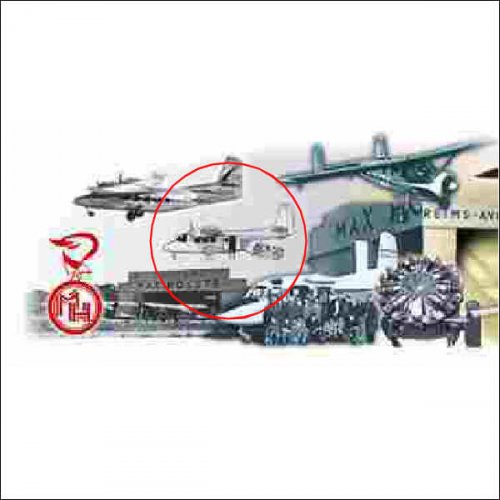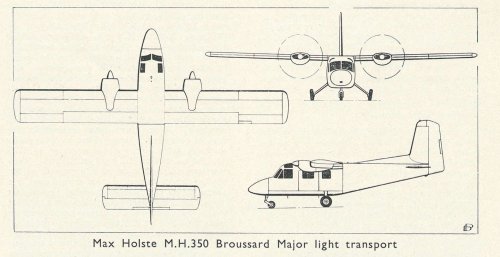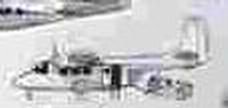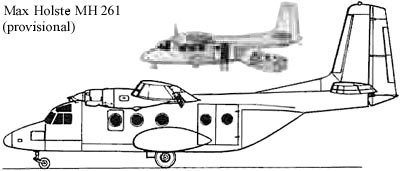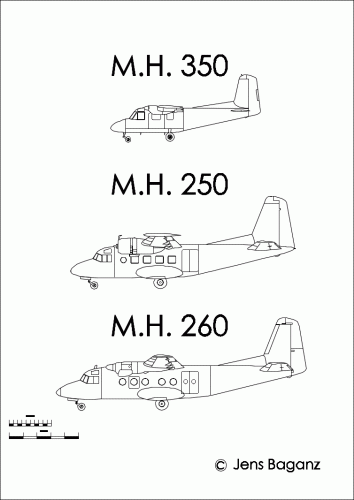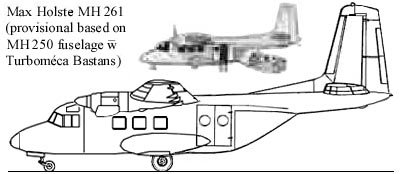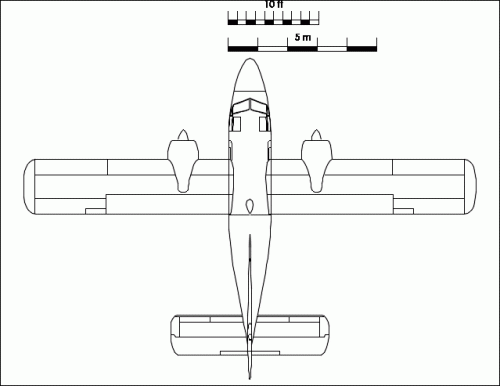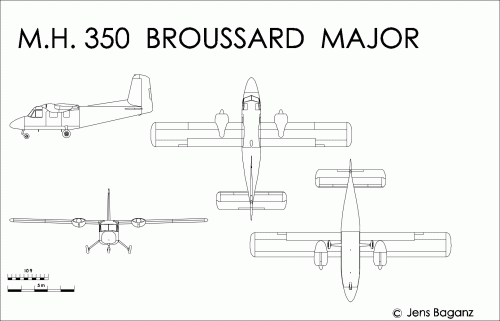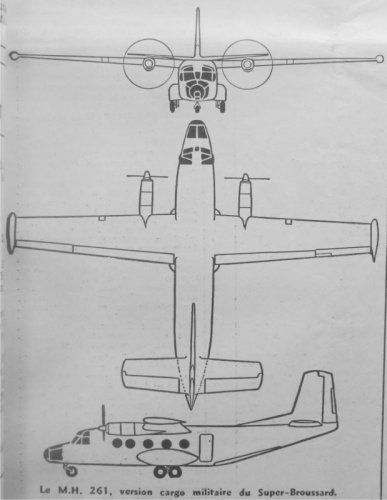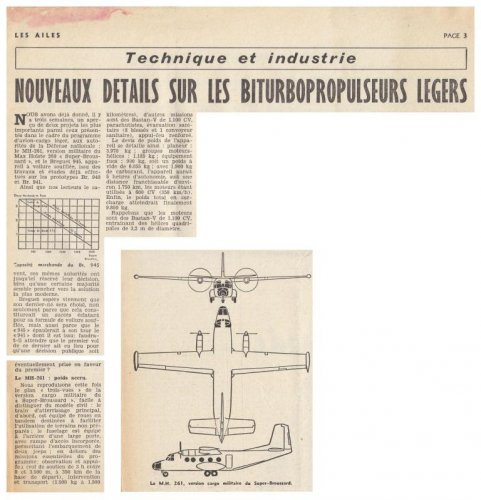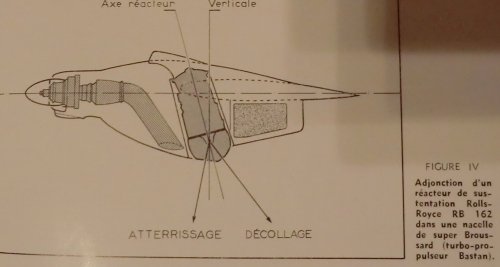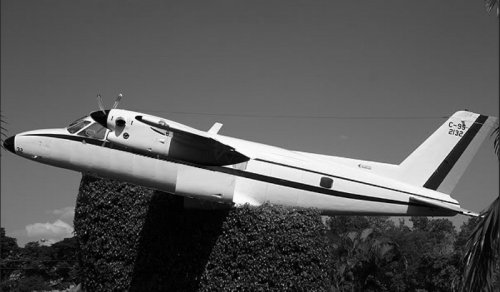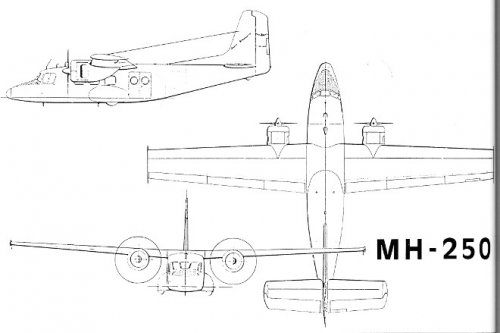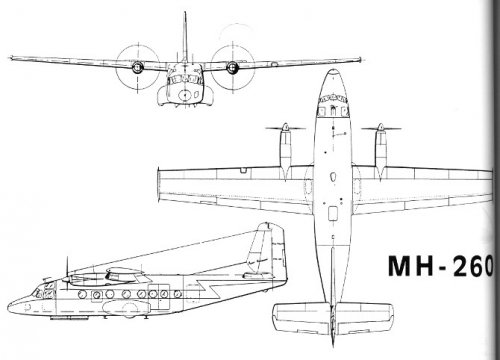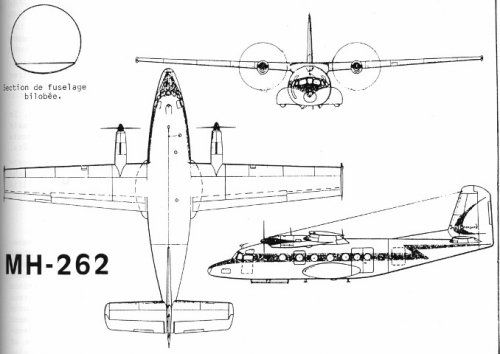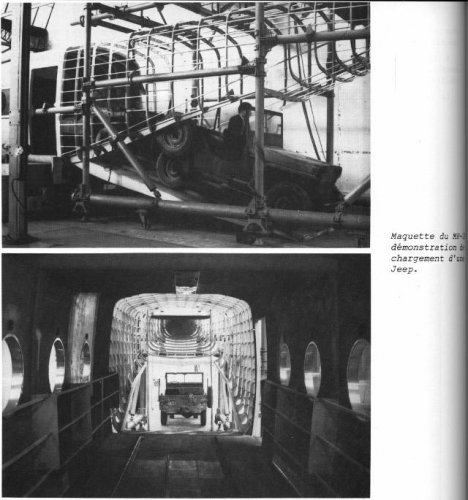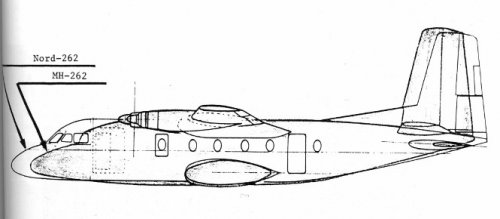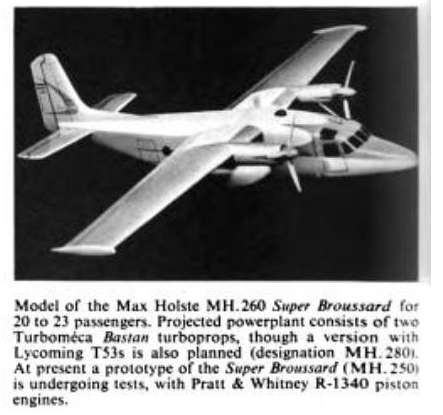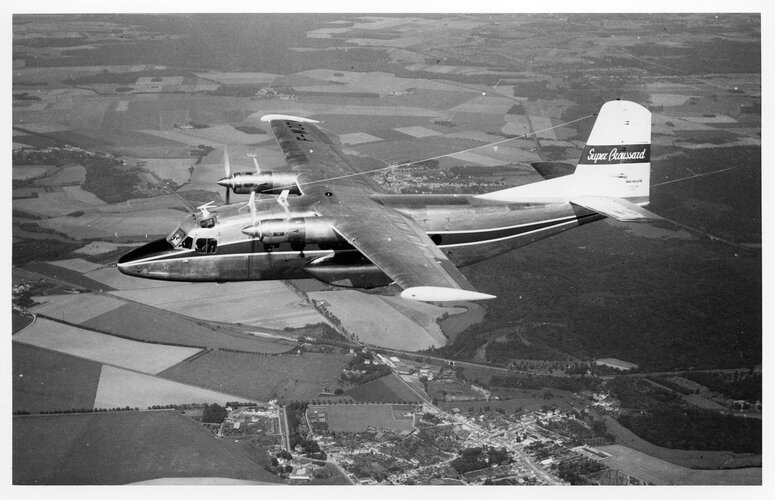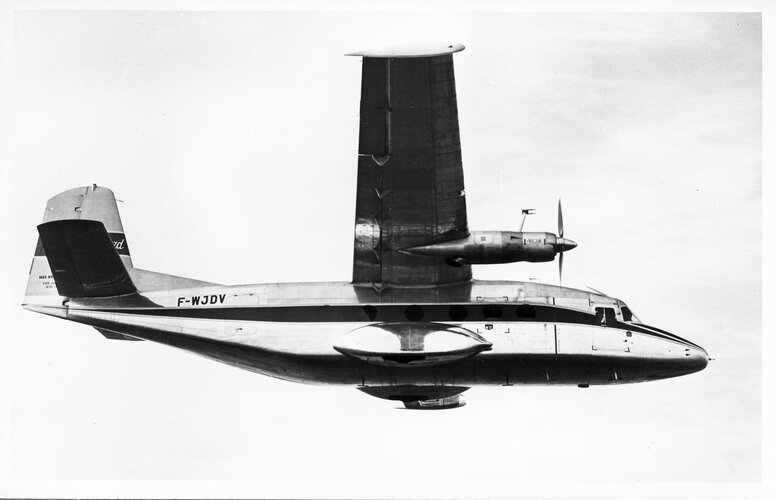Hi Kuno,
In the book by Jacques Delarue, who was a close associate of Max Holste, the reason is not given in detail. But it is clear that the hesitations about the configuration of the MH.250 / 260 / 262 (about the type of engines and the pressurized cabin), complicated by the negotiations with Nord Aviation and with the government, resulted in financial difficulties and disagreements among the officials of the Max Holste company.
On 18 May 1960, Cessna acquired 49 percent shares in the Max Holste company and started to press the designer to accept any agreement.
On 31 January 1961, Max Holste abandoned all the rights of the MH.260 design and derivatives to Nord Aviation, who made preseries examples of the MH.260 and developed the N.262. At about the same time, the designer was elaborating the MH.300 Broussard Major project with 390 hp engines. Cessna pressed for a different twin-engine aircraft with 260 hp powerplants taken from the Cessna 310, but Max Holste was reluctant and proposed the MH.350 instead. There was a project to build this one in Morocco.
Jacques Delarue only says that the Moroccan project was supported by Holste and Clostermann for "fundamentally different" reasons, but does not elaborate. Soon after, the two men clashed, and Max Holste had to resign at a shareholder meeting on 9 August 1961. He sold his shares in the company against the rights on the MH.350 design, and the company had to change name, becoming Reims Aviation.
After that, Max Holste directed a design team in Cagnes-sur-Mer, with some former employees, who worked on the MH.500 autogyro. In 1964, Max Holste went to Morocco, hoping to create an aircraft industry there building the MH.350. Delarue hints that people at Reims Aviation used their connections with Moroccan authorities to make this fail.
After that, he went to Brazil. It is said that he had former connections with South Africa and Brazil, and opted for the latter. His hope was to create an aircraft industry and build the MH.360 (derivative from the MH.350). He was received by Ozires Silva at the CTA at Sao José dos Campos, and started the study PAR-6504 that would become the EMB-100 Bandeirante.
Reading the book, it seems clear that Max Holste was very independent-minded, and was unhappy when someone else wanted to modify his own projects. When Embraer was created and started to build a design team to make modifications to the EMB-100, which would become the series production EMB-110, Max Holste left the company and worked as an independent consultant on other projects.
Adrien

